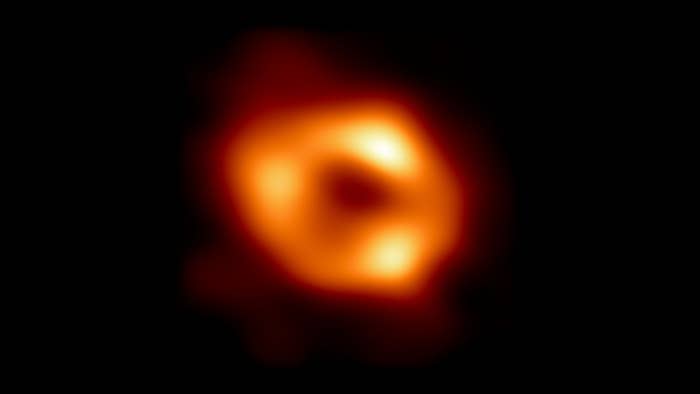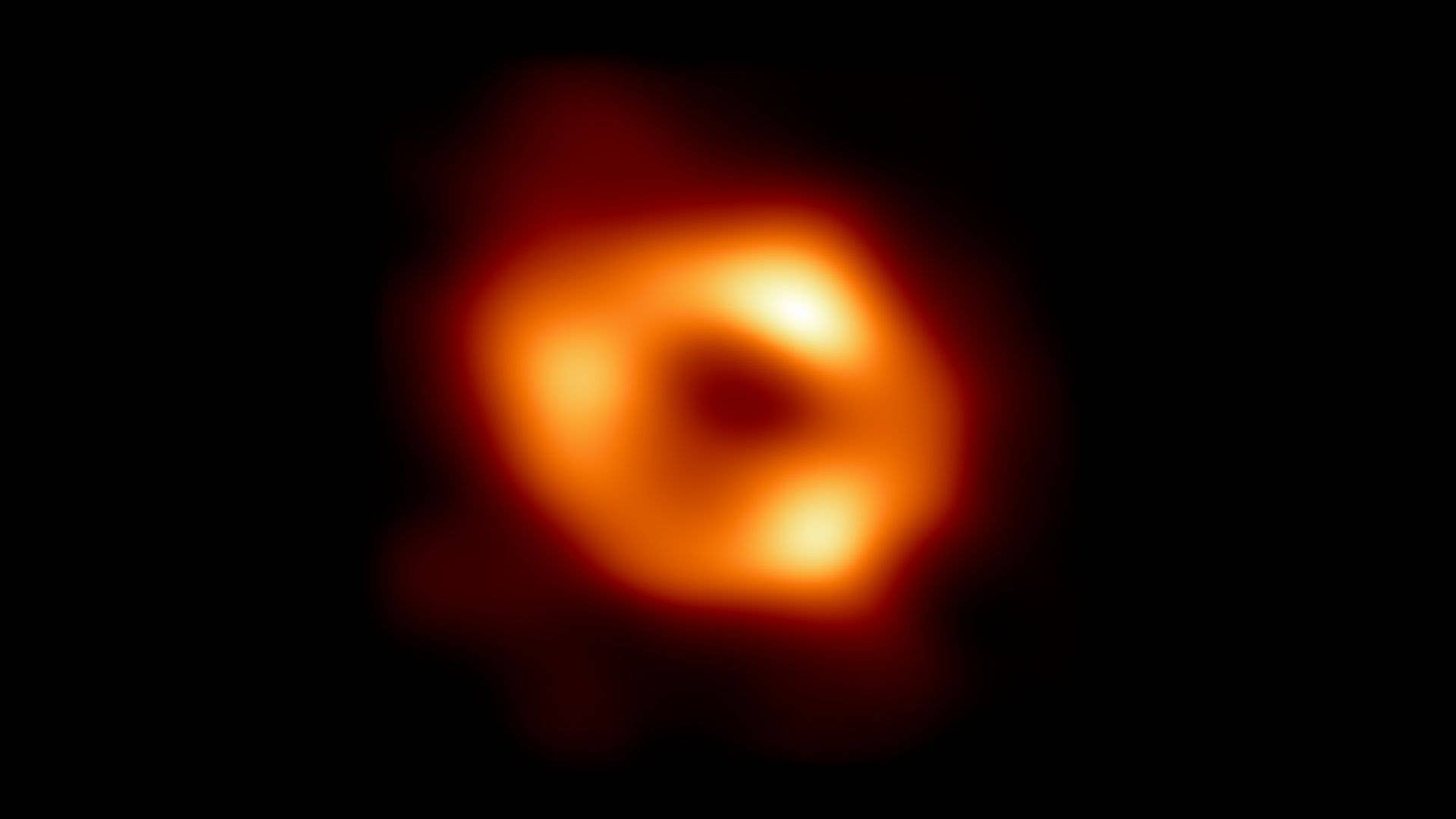
For the first time in history, astronomers have captured a photo of the black hole at the heart of our galaxy.
Via the Event Horizon Telescope, astronomers have shared the image of the Milky Way’s Sagittarius A*, per the EHS website. While the black hole itself—which has been discussed by scientists for years—cannot be seen, the image shows what’s called a “shadow,” essentially a ring surrounding its central area. The hole is estimated to be four million times larger than our sun.
“We were stunned by how well the size of the ring agreed with predictions from Einstein’s Theory of General Relativity,” said EHT project scientist Geoffrey Bower from the Institute of Astronomy and Astrophysics, Academia Sinica, Taipei. “These unprecedented observations have greatly improved our understanding of what happens at the very centre of our galaxy, and offer new insights on how these giant black holes interact with their surroundings.”
The hole itself is roughly 27,000 light-years away from Earth, and astronomers tapped the EHT to link eight radio observatories across the globe to create one telescope. Previously, the telescope captured an image of the black hole M87* in the Messier 87 galaxy, but this marks the first time one has been taken in the Milky Way.
“We have two completely different types of galaxies and two very different black hole masses, but close to the edge of these black holes they look amazingly similar,” said Sera Markoff, co-chair of the EHT Science Council. “This tells us that General Relativity governs these objects up close, and any differences we see further away must be due to differences in the material that surrounds the black holes.”
More than 300 researchers from 80 institutes across the globe came together for the EHT Collaboration, and worked for five years to combine and research data. Now, with two black holes of differing size, scientists can learn more about how they compare and contrast.

